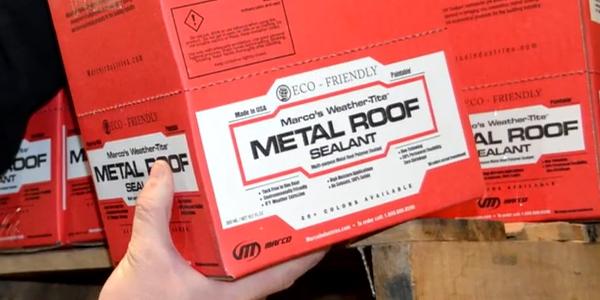UP TO THE MINUTE
Ensuring quality and longevity: A guide to metal roofing terminology

By Anna Lockhart.
Metal roofs can come in all shapes, sizes and styles. Determining the best fit for a project can sometimes be a challenge, so here’s a closer look at the various factors that go into creating the perfect metal roofing system.
Editor’s note: The Metal Roofing Alliance (MRA) has organized the Residential Metal Roofing Buyer’s Guide to help homeowners learn about the basics of roofing. This article discusses the different kinds of roofing materials using a passage from the guide.
Metal roofs are the perfect option for home and building owners looking to make sure their project lasts for decades while also providing the best aesthetics. As metal roofs can be a major investment, it is important to understand the installation process and the various materials needed to build the ultimate, high-quality metal roofing system. Dedicated to providing home and building owners with the basic knowledge and resources about metal roofing, the Metal Roofing Alliance has created the informative Residential Metal Roofing Buyer’s Guide, which touches on the topic of metal roofing materials and breaks down the installation process. Here’s a brief glimpse at what it has to say about metal roofing materials:
Metal standards and construction details
Your roof's performance is heavily reliant on the quality of materials used in its construction. Opting for substandard products can lead to premature wear and unexpected complications over time. Making sure your roof is built with high-quality materials for the following uses is important!
- Roof substructure: The foundation of a metal roof, responsible for supporting the roof panels and transferring loads to the structure. Proper design and installation are crucial for withstanding live and deadloads.
- Condensation management: While metal roofing itself doesn't cause condensation, proper insulation, vapor barriers and ventilation are essential to prevent moisture buildup, especially in attic spaces.
- Fasteners: The type of fasteners used depends on the metal composition and style. Manufacturers provide specifications for appropriate fastening methods.
- Ventilation: Adequate ventilation is critical for both efficiency and longevity. Intake and exhaust vents are necessary components of a well-ventilated roof system.
- Curbing & roof jacks: These elements support roof penetrations like skylights and pipes, reducing the risk of water leaks.
- Sealants: Properly selected sealants are vital for thermal movement, expansion, contraction and weather resistance. Manufacturers provide approved sealant options to maintain product warranties.
Roof underlayment
A roof underlayment serves as a water-resistant barrier between the roof deck and the elements. For metal roofing systems, underlayments must withstand high temperatures and provide superior waterproofing protection.
- Types of underlayments: Options include traditional asphalt-saturated organic felts, modified bitumen self-adhered membranes and synthetic underlayments. Each has unique advantages in terms of durability, UV resistance and fire protection.
- Modified self-adhered underlayments: Ideal for metal roofing, these underlayments offer enhanced durability, UV resistance and puncture resistance. It's essential to choose products rated for high temperatures and prolonged UV exposure.
- Synthetic underlayments: Known for ease of installation and slip resistance, synthetics offer moisture repellency but may require careful nail/fastener sealing in windy or icy conditions.
- Specialty underlayments: With the rise of wildfires, fire-rated underlayments have become crucial for achieving Class A fire ratings. Recent innovations combine waterproofing and fire resistance in a single product.
By investing in high-quality materials that are then installed correctly by contractors, home and building owners can almost guarantee having a metal roof system that will outlast and outperform most other systems on the market. Following industry standards is key to ensuring homeowners can enjoy their durable and aesthetically pleasing new roof for decades to come!
Learn more about Metal Roofing Alliance (MRA) in their Coffee Shop Directory or visit www.metalroofing.com.
About Anna
Anna Lockhart is a content administrator/writer for the Coffee Shops and AskARoofer™. When she’s not working, she’s most likely to be found with her nose in a book or attempting to master a new cookie recipe.



















Comments
Leave a Reply
Have an account? Login to leave a comment!
Sign In